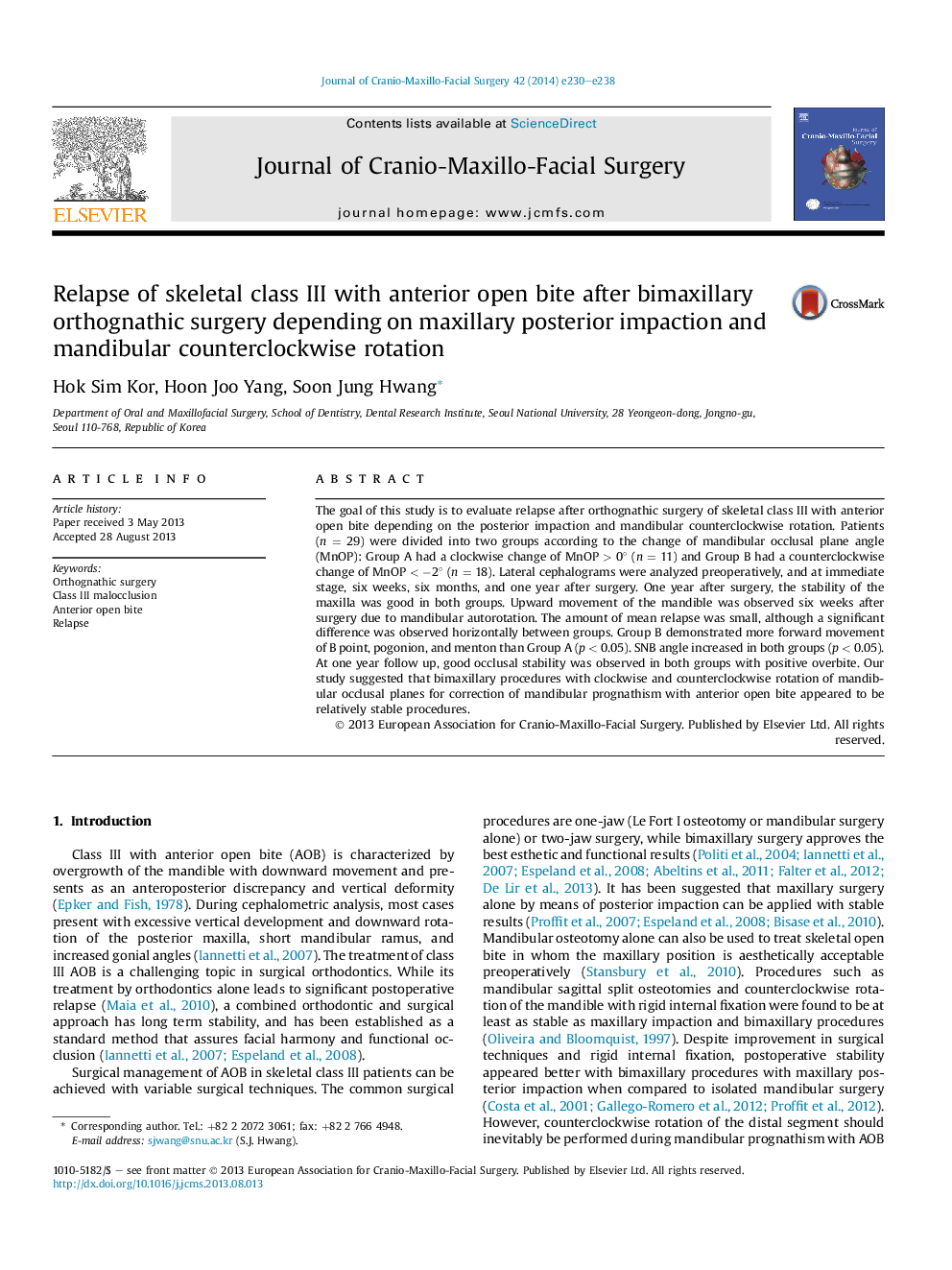| Article ID | Journal | Published Year | Pages | File Type |
|---|---|---|---|---|
| 3142632 | Journal of Cranio-Maxillofacial Surgery | 2014 | 9 Pages |
Abstract
The goal of this study is to evaluate relapse after orthognathic surgery of skeletal class III with anterior open bite depending on the posterior impaction and mandibular counterclockwise rotation. Patients (n = 29) were divided into two groups according to the change of mandibular occlusal plane angle (MnOP): Group A had a clockwise change of MnOP > 0° (n = 11) and Group B had a counterclockwise change of MnOP < â2° (n = 18). Lateral cephalograms were analyzed preoperatively, and at immediate stage, six weeks, six months, and one year after surgery. One year after surgery, the stability of the maxilla was good in both groups. Upward movement of the mandible was observed six weeks after surgery due to mandibular autorotation. The amount of mean relapse was small, although a significant difference was observed horizontally between groups. Group B demonstrated more forward movement of B point, pogonion, and menton than Group A (p < 0.05). SNB angle increased in both groups (p < 0.05). At one year follow up, good occlusal stability was observed in both groups with positive overbite. Our study suggested that bimaxillary procedures with clockwise and counterclockwise rotation of mandibular occlusal planes for correction of mandibular prognathism with anterior open bite appeared to be relatively stable procedures.
Related Topics
Health Sciences
Medicine and Dentistry
Dentistry, Oral Surgery and Medicine
Authors
Hok Sim Kor, Hoon Joo Yang, Soon Jung Hwang,
